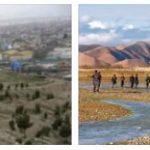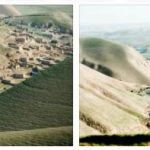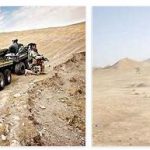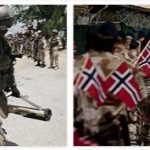Afghanistan is a linguistically diverse nation, with multiple languages spoken across various regions, reflecting the country’s rich history, cultural heritage, and ethnic composition.
Official Languages: The Constitution of Afghanistan recognizes two official languages: Pashto and Dari (Persian). These languages play central roles in government, education, media, and public discourse, serving as mediums of communication for the majority of the Afghan population.
- Pashto: According to lawschoolsinusa, Pashto, also known as Pakhto or Afghani, is an Iranian language belonging to the Indo-European language family. It is primarily spoken by the Pashtun ethnic group, which constitutes the largest ethnic group in Afghanistan, comprising approximately 42% of the population. Pashto is also spoken by Pashtuns in neighboring Pakistan and parts of Iran. Pashto is written in a modified Arabic script known as Pashto alphabet, which includes additional letters to represent Pashto phonemes not found in Arabic.
- Dari (Persian): Dari, also known as Afghan Persian, is another official language of Afghanistan. It is a dialect of Persian (Farsi), belonging to the Indo-Iranian branch of the Indo-European language family. Dari is spoken by various ethnic groups, including Tajiks, Hazaras, and Aimaks, and serves as a lingua franca for interethnic communication. Dari is also spoken in parts of Iran, Tajikistan, and Uzbekistan. Dari is written in the Persian alphabet, which is derived from the Arabic script.
Minority Languages: In addition to Pashto and Dari, Afghanistan is home to numerous minority languages, reflecting the country’s diverse ethnic and linguistic landscape. These languages are spoken by smaller ethnic groups and communities across different regions of Afghanistan. Some of the notable minority languages in Afghanistan include:
- Uzbek: Uzbek is an Eastern Turkic language spoken by the Uzbek ethnic minority in northern Afghanistan, particularly in provinces bordering Uzbekistan, such as Balkh, Faryab, and Samangan. Uzbek is also spoken in Uzbekistan, Tajikistan, and parts of Kyrgyzstan, Kazakhstan, and Turkmenistan. It is written in the Cyrillic script in Uzbekistan and Afghanistan, although efforts have been made to introduce the Latin script.
- Turkmen: Turkmen is a Turkic language spoken by the Turkmen ethnic minority in western Afghanistan, primarily in provinces bordering Turkmenistan, such as Herat and Badghis. Turkmen is also spoken in Turkmenistan, Iran, and parts of Uzbekistan, Kazakhstan, and Afghanistan. It is written in the Latin script in Turkmenistan and Afghanistan, although variations of the Cyrillic and Arabic scripts were historically used.
- Balochi: Balochi is an Iranian language spoken by the Baloch ethnic minority in southeastern Afghanistan, particularly in provinces bordering Pakistan, such as Nimroz and Helmand. Balochi is also spoken in Iran, Pakistan, and parts of Oman and the Arabian Peninsula. It is written in the Perso-Arabic script, although variations of the Latin script have been used in some contexts.
- Pamiri languages: The Pamiri languages are a group of Eastern Iranian languages spoken by various Pamiri ethnic groups in the northeastern regions of Afghanistan, particularly in the Wakhan Corridor and Badakhshan Province. These languages include Shughni, Rushani, Wakhi, and Ishkashimi, among others. Pamiri languages are also spoken in Tajikistan, China, and Pakistan. They are written in the Cyrillic or Perso-Arabic script, depending on the country and context.
- Hazara: Hazaragi, also known as Hazaragi Persian, is a dialect of Dari spoken by the Hazara ethnic minority in central Afghanistan, particularly in provinces such as Bamiyan, Daykundi, and Ghazni. Hazaragi exhibits influences from Persian, Mongolic, and Turkic languages and is written in the Perso-Arabic script.
- Nuristani languages: The Nuristani languages are a group of Indo-Iranian languages spoken by the Nuristani people in eastern Afghanistan, particularly in Nuristan Province. These languages include Kamkata-viri, Vasi-vari, and Prasuni, among others. Nuristani languages are characterized by their distinctiveness from neighboring languages and are written in modified Perso-Arabic scripts.
- Pashayi: Pashayi is an Indo-Iranian language spoken by the Pashai ethnic group in eastern Afghanistan, particularly in provinces such as Kapisa, Laghman, and Kunar. Pashayi exhibits influences from both Indo-Aryan and Iranian language families and is written in a modified Perso-Arabic script.
Significance and Cultural Heritage: The diverse linguistic landscape of Afghanistan reflects the country’s rich cultural heritage, historical interactions, and ethnic diversity. Languages serve as repositories of cultural identity, oral traditions, folklore, literature, and historical narratives, preserving the collective memory of different communities. Despite linguistic diversity, Pashto and Dari remain important unifying forces in Afghan society, fostering communication and cohesion among various ethnic groups and regions. Efforts to promote multilingualism, preserve minority languages, and promote linguistic rights are essential for celebrating Afghanistan’s linguistic diversity and fostering inclusive national identity.
Challenges and Preservation Efforts: Afghanistan’s linguistic diversity faces various challenges, including language endangerment, linguistic assimilation, and the dominance of Pashto and Dari in official domains. Rapid urbanization, globalization, and migration contribute to language shift and the erosion of minority languages, particularly among younger generations. Additionally, political instability, conflict, and displacement exacerbate language endangerment and disrupt efforts to preserve linguistic heritage.
Efforts to preserve and promote Afghanistan’s linguistic diversity include:
- Language Documentation and Research: Linguists, scholars, and cultural organizations conduct research and documentation projects to study minority languages, record oral traditions, and document linguistic diversity. These efforts contribute to the preservation and documentation of endangered languages and support language revitalization initiatives.
- Language Education and Literacy: Programs promoting mother-tongue education, bilingual education, and literacy in minority languages aim to preserve linguistic diversity, promote cultural identity, and improve educational outcomes for marginalized communities. Community-based initiatives, language schools, and literacy programs play crucial roles in promoting multilingualism and language rights.
- Cultural Revitalization: Cultural organizations, community groups, and indigenous communities work to revitalize and promote minority languages through cultural festivals, language revitalization workshops, and cultural heritage initiatives. These efforts raise awareness about linguistic diversity, celebrate cultural heritage, and empower communities to preserve their linguistic traditions.
- Policy and Advocacy: Advocacy efforts seek to raise awareness about linguistic rights, promote multilingualism in education and public administration, and advocate for policies that support linguistic diversity and language preservation. International organizations, NGOs, and civil society groups advocate for the inclusion of minority languages in national policies, legislation, and educational curricula.
- Digital Resources and Technology: Digital technologies and online resources play a vital role in language preservation and revitalization efforts. Initiatives such as digital archives, online dictionaries, language learning apps, and multimedia platforms facilitate access to linguistic resources, promote language documentation, and support language revitalization efforts. Digital tools also enable communities to create and share content in their native languages, fostering pride in linguistic heritage and facilitating intergenerational transmission of language and culture.
Despite these efforts, Afghanistan’s linguistic diversity remains vulnerable to ongoing challenges, including socioeconomic disparities, political instability, and conflict-related displacement. Addressing these challenges requires coordinated efforts at the local, national, and international levels to support language preservation, promote linguistic rights, and ensure inclusive development for all linguistic communities.
In conclusion, Afghanistan’s linguistic diversity is a testament to the country’s rich cultural heritage and historical legacy. Pashto and Dari serve as official languages, while numerous minority languages reflect the ethnic diversity and cultural richness of Afghan society. Efforts to preserve and promote Afghanistan’s linguistic diversity are essential for celebrating cultural heritage, fostering inclusive national identity, and ensuring linguistic rights for all communities. Through language documentation, education, cultural revitalization, policy advocacy, and digital innovation, Afghanistan can preserve its linguistic heritage and promote multilingualism as a source of strength, resilience, and unity for future generations.





